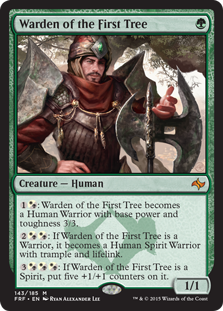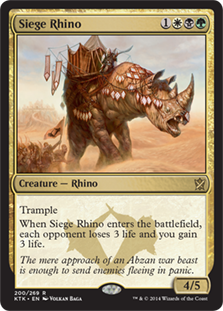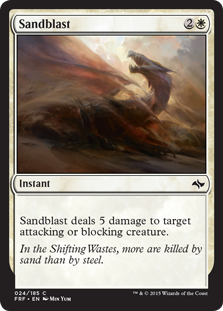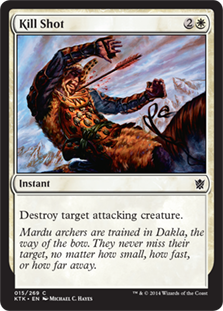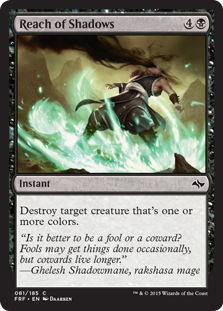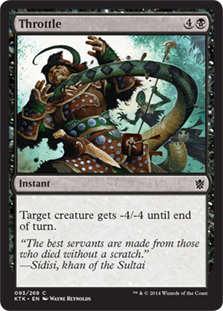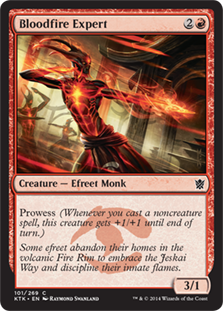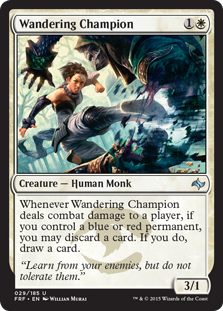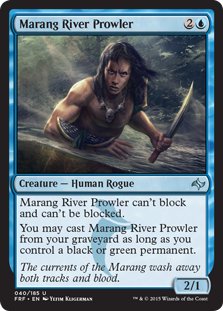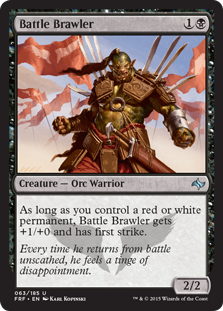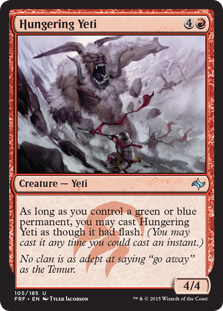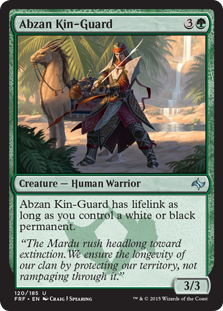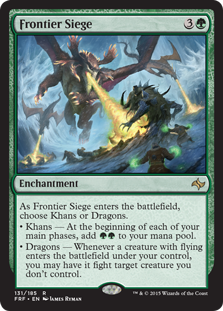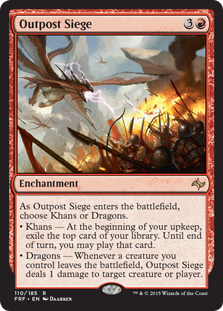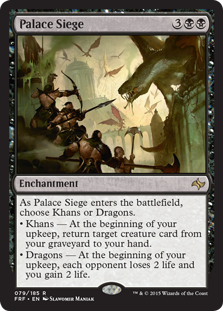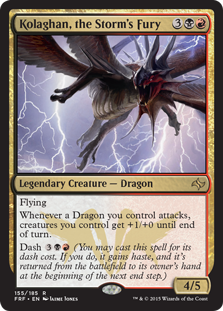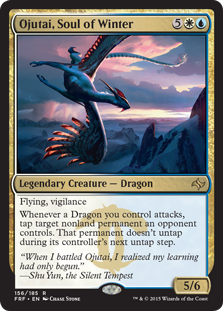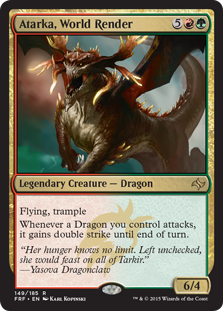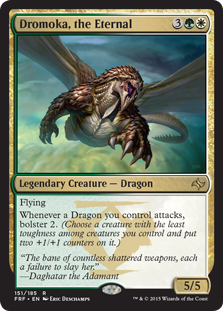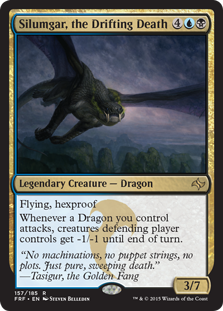Hello everyone!
Khans of Tarkir (KTK) limited was one of the most interesting formats since Innistrad in my opinion. You could do almost anything you wanted, from drafting two-color aggressive decks to four or five-color control decks. Of course that the wedge nature of the format favored more the Khans colors and the enemy color pairs, but some allied color decks were very good if drafted correctly, such as RG and GW. The big question now is how Fate Reforged is going to affect this limited environment?
The goal of this article is to discuss the impact of Fate Reforged on the pillars of Khans of Tarkir limited. Are things going to change quite a bit, or will we have to make just small adjustments regarding how we approach the format right now? Understanding this faster can yield a great advantage over the competition in the first weeks of the new format. It is worth noting that this format discussion is based mainly in the commons and uncommons of the set because those are the cards that truly dictate the texture of the format, and this is NOT a set review type of article, although I am going to highlight some cards, and even some of the mythic and rare cycles are going to receive some comments. Okay, enough introduction, let’s start!
At first glance, it seems that Fate Reforged is a less “golden” set, and it is, but there are powerful creatures with hybrid mana actvations that are well worth the splash, like the golden bombs from KTK. Aside from that, the reprinting of the common land cycle is a very important and influential factor that contributes a lot for keeping the mana flexibility of the format intact, allowing greedy manabases to be viable as long as you are willing to sacrifice some picks for it. Also, this will leave Sealed Deck exactly as it is now, i.e., you are going to check what your manabase can support and then play all the best cards in those colors. Maybe we are going to see fewer 5-color decks and more 4-color decks because if your splash is a hybrid mana activation instead of a 3-color spell or morph activation, you just need to splash one color and not two. For example, if you are playing Jeskai colors but want to splash for Duneblast you will have to splash for both black AND green. However, if you are playing Jeskai and want to splash for Daghatar the Adamant, you actually just need to splash for black OR green. With that being said, I think that sealed is going to remain slow with card advantage and power still mattering a lot, just like it is now.
As for draft, I think that we are going to see some changes, although they are going to be subtle. There will be people still trying to draft all the powerful gold cards and playing 4- and 5-color control decks, but I think the norm will be more “pure” 2-color decks instead of 3-color “clan” decks with 2 base colors and a splash for the 3rd. Now, at the end of the format, more people began to realize how profitable it can be to curve out smoothly while your opponent is playing tapped lands or missing colors. My best results were playing 2-color aggressive decks. Sometimes I would have a light splash for a morph, but just if I incidentally had the lands. Sure, some people run hot and almost always had 3 basic lands on Turn 3, but that was not my case, and if you are like me you are going to appreciate the consistency of 2-color manabases.
Here is where I think the two creature cycles with hybrid mana activation will make the difference. In KTK draft, what pushed someone straight into 3 colors was opening a 3-color bomb like, let’s say, Siege Rhino. You would be hard-pressed to not play with it, so you would already put yourself in the Abzan colors. As discussed above, when playing with the hybrid mana creatures, you don’t have to actually play with all 3 clan colors to activate the ability. Another important thing to note is that you actually just need ONE color to cast these creatures, so even if you are missing the activation cost mana, you can cast your creature. In this context, they are much like morph creatures, in the sense that you can cast them even if you are facing some kind of mana restrictions. Therefore, if you happen to first-pick one of these creatures, you are not adding extra mana concerns to your draft. In fact, they give you more flexibility than if they had just one mana symbol in their activation costs. You don’t have to decide your second color until later in the draft and that flexibility is HUGE.
One is very easy to cast, the other not so much…
So, assuming that we will see more “pure” 2-color decks it would be right to assume the format will become faster, right? In this case, I don’t think so. Looking at the new creatures we are not getting that many great 1- and 2-drops. Some of them are even much better at defense than offense, like Typhoid Rats and Arashin Cleric. Most commons 1-drops are unplayable. We have Mardu Woe-Reaper at uncommon, which is very good in any white-based aggro deck, but that’s it.
The real action of the format will still start at Turn 3. Of course you still have to play some 2-drops, especially in an aggro deck, but the majority of them are just curve-fillers and are there to trade up with your opponent’s morphs.
Another factor that does not help to increase the speed of the format is the removal suite. The removal is still situational and/or not very efficiently costed. In KTK draft, if you wanted to get ahead on tempo with your aggressive deck, you had to count on bounce/tap spells or Savage Punch. That’s why the other good non-white aggro decks of the format were UG, RG, and UR; if you are not pumping your team, you have to remove the blockers out of the way somehow while deploying more threats. The cheap way to do that in this format is in blue (bounce/tap) or green (fight/combat tricks). I do not expect that to change much. The good news is that blue actually got new, interesting bouce/tap spells in Whisk Away and Will of the Naga, and white got a new cantrip/tap spell in Pressure Point.
With that said, some of the new removal spells of Fate Reforged are actually clear upgrades from the removal spells we have seen in Khans of Tarkir. Compare, for example, Sandblast with Kill Shot or Reach the Shadows with Throttle. The upgrade of Sandblast over Kill Shot is more subtle, but it is very important. White is considered by a lot of people to be the best color in KTK draft, and one of the best, if not the best, deck archetype in KTK is BW Warriors. The irony? Kill Shot was not a card that you would want in your best BW warriors deck, simply because it asks you to do the opposite of what your deck wants to be doing. You did not want to be blocking. Instead, Sandblast allows you to keep attacking while removing annoying blockers out of the way. This shows one use for Sandblast; however, the real reason why it is better than Kill Shot is that it is flexible! You can pick Sandblast knowing that you are going to play it in any white deck that you end up with, aggro or control, no matter what, whereas Kill Shot only shines in control decks. I think that Sandblast is going to be a high pick, and I consider it the best white common together with Sandsteppe Outcast.
The two removal spells discussed above show a trend I’ve noticed in several Fate Reforged cards. They are cards that are slightly different than some KTK cards but play kind of the same specific role of the respective KTK card, even occupying the same spot on the curve!
An example of this trend in the creature department is the comparison between Bloodfire Expert and Gore Swine. Although the Expert is a Jeskai card, it feels much more like a Temur card, as he is a great enabler for triggering ferocious. The Swine is a more “consistent” enabler because he will always have 4 power, helping with ferocious triggers from creatures, but this comes at the expense of being more fragile (1 toughness). I think the Bloodfire Expert is slightly better because he can grow bigger, but it can really end up being deck-dependant. Anyway, both provide the Turn 4 “Savage Punch your morph, bash for 6, play a 2-drop” or “Force Away your blocker, loot, bash for 4, play a 2-drop” sequences efficiently.
There are other cases like this, and understanding them can give you a faster understanding of the new format, leading to small advantages and better drafts in the beginning. To close things out, I would like to discuss some of the cycles in Fate Reforged and their “first pick” status.
I’ve already talked a little bit about the cycle of creatures with hybrid mana activations and the flexibility that they represent. All those creatures have first pick status with the mythic cycle being more powerful. Just try to not commit to a second base color until the second pack, the first KTK pack. Imagine you first picked a Warden of the First Tree, then settled yourself in GW just to find a Rakshasa Deathdealer in your KTK pack. Sure, you can still splash for it and play it, but it is a card that is way more efficient in the early game and very mana-intensive!
The first cycle I want to talk about is the cycle of uncommon creatures that improve if you control a permanent that have one of the other two colors of the clan.
In my opinion, they are all fine first picks out of weak packs, but in a strong pack I would consider only the two 2-drops. For me, Battle Brawler is the best of the bunch because a) his bonus is the most impactful right away and b) he is a warrior. He is the perfect 2-drop for the warrior decks. Compare him with Ainok Bond-Kin and you will realize what I am talking about. To make the Bond-Kin a 3/2 first striker we have to skip our third turn, NOT attack and block with it, and I am not mentioning the fact that he is not a warrior. To make the Brawler a 3/2 first striker all we have to do is to CAST a white creature and we can bash for 3 right away!!! Ironically, the Wandering Champion might be better for a Mardu deck than for a Jeskai deck, but he is very solid. The Marang River Prowler is very interesting, and I believe he is a great finisher for a grindy Sultai control deck. The other two are unexciting, and, as I said, would be fine out of weak packs, but should not, by any means, dictate your color choices.
The Siege cycle is very interesting, and all of them provide a very powerful effect. Some of them will require more commitment from you, in terms of deck construction and/or color requirements (some have double-colored mana costs), but they are well worth it and I can’t see anyone wanting to pass them.
In Fate Reforged we have TWO Dragons cycles, one uncommon and one rare. I think the uncommon Dragons (Wardscale Dragon, Mindscour Dragon, Noxious Dragon, Shockmaw Dragon and Destructor Dragon) are worth consideration for first pick only in weak packs. A 4/4 flier for 6 is nice, but they are not super bombs and in a format full of 5-mana morphs, it is really hard to play too many high drops.
The rare Dragons are much more powerful and are worth the first pick and the high drop slot. They have great effects and if left unchecked will finish the game fast. I think Dromoka, the Eternal and Kolaghan, the Storm’s Fury are the best two, followed by Ojutai, Soul of Winter and Atarka, World Render. Silumgar, the Drifting Death seems the least powerful but is the most resilient and can block forever. Despite the fact that they are double-colored, you really do not have to settle on both colors as soon as you pick them because you don’t have to cast them early in a game. You can, for example, pick Kolaghan, stay base red for the first pack, settle in red-white in the second pack and just splash black for Kolaghan in your final deck. (In this particular case, you can even splash for other Mardu cards)
Well, this was what I had for today. I hope you have enjoyed and that it was somehow useful for you all. Any feedback from you would be much appreciated.
Thanks for reading,
Rodolfo Maia

